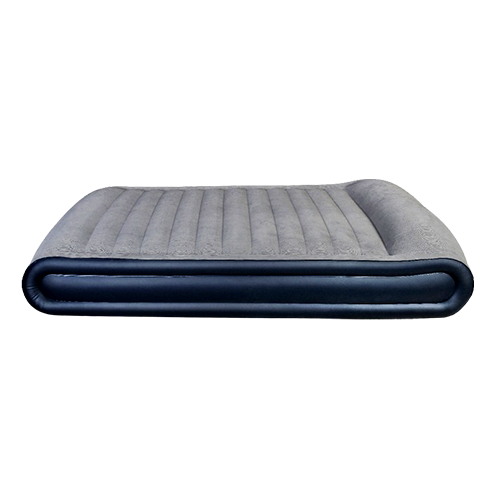When choosing a portable camping air mattress, durability is key. Outdoor conditions vary greatly, so the material must resist wear, moisture, and punctures. Today, the most common materials include PVC, TPU, and flocked fabric. Each has unique advantages, making them suitable for different users and camping scenarios.
1. PVC: Affordable and Widely Used
PVC (polyvinyl chloride) is the most common material in air mattresses. It is cost-effective, waterproof, and easy to mold. Furthermore, it holds air well and provides strong support. Many campers choose PVC because it performs reliably in most environments.
However, PVC can become stiff in cold weather. Also, it is heavier than other materials. Therefore, while it's durable, it may not be the best choice for long hikes. But for car camping or occasional use, PVC remains a solid and affordable option.
2. TPU: Lightweight and Eco-Friendly
TPU (thermoplastic polyurethane) is gaining popularity. It is lighter than PVC, more flexible, and more resistant to abrasion. Moreover, TPU is eco-friendly and emits less odor, which improves user comfort during sleep.
Another advantage is that TPU resists temperature fluctuations. It remains soft in cold weather and strong in heat. Although TPU mattresses are more expensive, they are ideal for frequent or long-distance campers who prioritize portability and reliability.
 3. Flocked Fabric: Comfort Meets Grip
3. Flocked Fabric: Comfort Meets Grip
Flocked fabric is not a structural material but a surface treatment. Usually, it covers PVC or TPU mattresses to provide a velvety finish. This finish improves comfort by reducing skin irritation. Also, it keeps bedding in place, preventing sliding during sleep.
However, flocked fabric adds weight and may absorb moisture if not waterproofed. Even so, it significantly enhances sleep quality, especially for those who camp without extra bedding. Therefore, it works best as a comfort-enhancing layer on sturdy materials.
4. Comparing the Three Materials
To better understand these options, let’s compare them across four aspects: weight, durability, comfort, and cost.
PVC: Heavy, durable, low cost, moderate comfort
TPU: Lightweight, highly durable, higher cost, better flexibility
Flocked Fabric: Adds comfort and grip, but not durable alone
Thus, for users seeking the best portable camping air mattress, a TPU core with a flocked surface offers both strength and comfort. Meanwhile, PVC options remain great for budget-conscious or casual users.
5. Consider the Camping Scenario
Your choice should also depend on where and how you camp. For example, in wet or rocky areas, TPU resists punctures better. On the other hand, if you camp in parks or controlled environments, PVC is more than enough.
Moreover, if you pack light for hiking trips, TPU's low weight offers major benefits. For basecamp or RV camping, weight matters less, so comfort and affordability take priority.
6. Additional Features Matter
Besides materials, some air mattresses include extra features. Look for models with reinforced seams, multi-layer valves, or built-in pumps. These upgrades enhance usability and lifespan. However, none of these can compensate for poor material quality. Always prioritize the base material first.
Conclusion: Choose Material Based on Your Needs
In conclusion, material selection greatly affects the performance of a portable camping air mattress. PVC is affordable and strong, TPU is light and advanced, and flocked surfaces increase comfort. By understanding the differences, you can confidently choose the right mattress for your adventure.
Browse our products: https://hongyusj-plastic.com/
